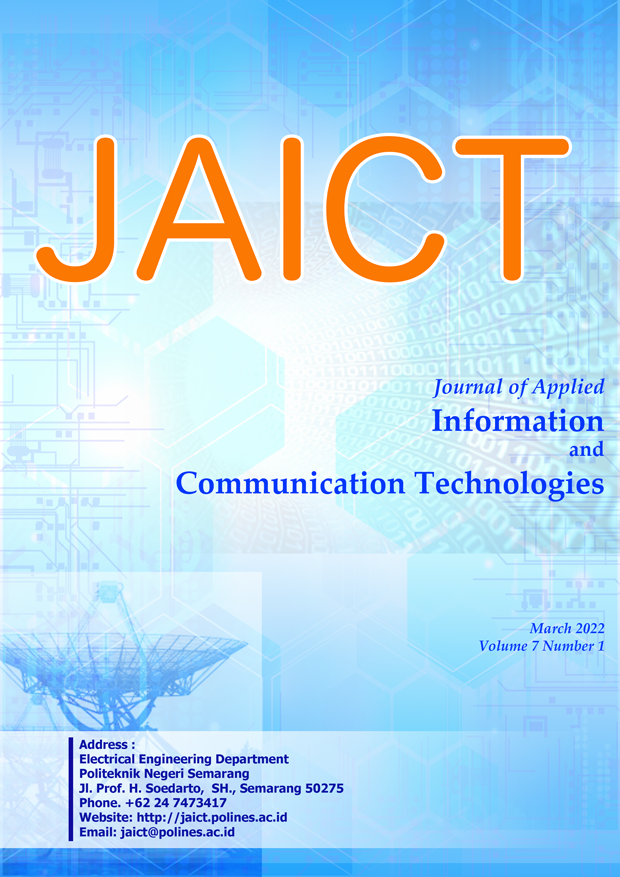TOMATO MATURITY DETECTION SYSTEM USING COLOR HISTOGRAM METHOD AND NEAREST NEIGHBOR
DOI:
https://doi.org/10.32497/jaict.v7i1.3074Keywords:
information technologyAbstract
Tomato (Lycopersicum esculentum Mill) is a type of horticultural plant that has a relatively fast maturity time compared to other fruits. In order to accelerate the implementation of smart farming in Indonesia, various methods that support agriculture have been developed. One of the technologies that can be applied to develop agriculture in Indonesia is image processing. This study aims to utilize image processing technology to detect and classify ripe and unripe tomatoes. The system is made using static images taken using a digital camera. The marker used in making the system to detect tomato ripeness is the color histogram. While the method for grouping tomatoes uses the nearest neighbor method. This study proves that the performance of the color histogram and nearest negihbor can be used to detect and classify tomatoes that are not ripe or ripe. The accuracy value obtained using this method is 80% while the precision value obtained is 80.53% and the recall value is 81.5%. The results of this study are expected to support the implementation of smart farming 4.0 in Indonesia.
Index Terms””Approximately four key words or phrases in alphabetical order, separated by commas. The first one must be the article”™s main subject.
Downloads
Published
Issue
Section
License
Authors who publish with this journal agree to the following terms:Authors retain copyright and grant the journal right of first publication with the work simultaneously licensed under a Creative Commons Attribution License that allows others to share the work with an acknowledgement of the work's authorship and initial publication in this journal.
Authors are able to enter into separate, additional contractual arrangements for the non-exclusive distribution of the journal's published version of the work (e.g., post it to an institutional repository or publish it in a book), with an acknowledgement of its initial publication in this journal.
Authors are permitted and encouraged to post their work online (e.g., in institutional repositories or on their website) prior to and during the submission process, as it can lead to productive exchanges, as well as earlier and greater citation of published work (See The Effect of Open Access).






